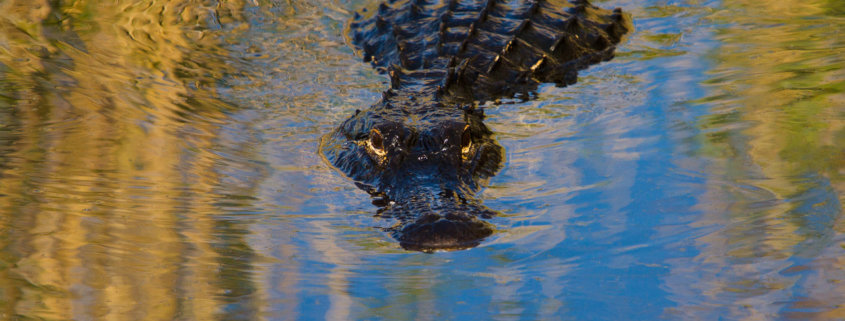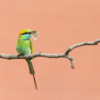How to Include Wildlife in your Landscape Photography
It’s easy to categorize yourself into a hole when you’re a photographer. We all have one thing that we absolutely love about landscape photography. For me, it’s waterfalls. There’s something mesmerizing about the way water cascades over large and small stones that draws me in. I love the look, the sounds, and the smells of waterfalls. However, I find that when I venture into other genres of photography, my creativity and vision improves.
One of my favorite things to do when I venture away from water is to combine wildlife and landscape photography into one cohesive photograph. Now you may be wondering how this could be possible. Think of it this way… your two favorite musical artists collaborate on a track to produce a hit that tops the charts for decades. The same thing can be true in photography. Bringing wildlife and landscape photography together has created some of my favorite photos. Let’s explore how to successfully achieve this photographic collaboration.
Know the Setting
Setting and place have a lot to do with all genres of photography. The best photographs tell the story of a place. The same is true for wildlife and landscape photography. Whenever I go somewhere, I like to take a day to take a tour, learn from locals, or explore on my own to get to know where I am. Oftentimes, I learn an interesting fact about plant life, geology, or animal life that I can subtly include in my photo to make it more interesting.
This is a technique that I actually learned from a documentary-style wedding photographer. I was skeptical at first because I didn’t want to waste the entire first day of photo opportunities. After I tried it with travel photography, I noticed that my photos were exceptionally more thoughtful than before. So, I added the trick to my entire photography workflow.
For an example of setting, take a look at the photograph above. I photographed this elk in Rocky Mountain National Park during the elk rut one September. The photograph has a lot to do with setting and story. Knowing that you can photograph beautiful alpine glow on the mountain peaks of the Rockies, I included that into the composition as my landscape element. For the wildlife element, I knew the elk would bugle during the rut to attract a mate. I patiently waited (while also anxious that I was running out of alpine glow light) for the elk to step into place and tilt his head back to bugle. The result is a photograph that combines wildlife and landscape photography that also tells a story of the setting.
Create Contrast
When I say contrast, I don’t want you to think about moving a slider left to right in post-processing. The best contrast in photography is achieved in the camera. I’d say that, when you combine wildlife and landscape photography, you actually get immediate contrast by pairing moving subjects in a still landscape.

Creating contrast between subject and reflected abstract at Anhinga Trail, Everglades National Park, Florida
Contrast can be anything that creates separation. It can be monochrome tones, texture, or patterns. The easiest way to create contrast in an image is with black and white photography. The ability to harmonize monochrome tones with wildlife and landscape photography can be very challenging.
Again, the contrast I’m talking about has absolutely nothing to do with post-processing. Can it be assisted in post-processing? Sure it can! However, the most thoughtful contrast can be seen when you don’t touch the contrast while editing your photos.
In the black and white photograph above, I captured a herd of zebras grazing in the grasslands of Kenya under textured cloudy skies. It’s easy to create black and white tones with zebras because they are already black and white. This photo becomes successful because the contrast in tones is paired with the monochrome sky. The wildlife stands out in the foreground, but the sky also captures your attention with its dramatically different tones.
I also love the contrast of the earth and sky in this photograph. The plains of Kenya can stretch on for miles and they are often extremely flat. Placing the flat landscape at the very bottom of the frame allows for the sky to become massive in the rest of the composition.
Create Scale
Whether it’s wildlife photography or landscape photography, I love to create scale in my images whenever I can. Scale is the ability to pair different sizes between your subjects to give your viewer an idea of the actual size of something. The size of geological features in landscape photography vary greatly. Animals can also vary in size. You can snap close-up photos of wildlife, but our job as photographers is to give the viewer a true sense of the subjects we are framing. Scale is the perfect way to do that.
When I was thinking of scale in Africa, I thought what better way to show size than with the massive height of giraffes. Luckily, I got the opportunity one evening as the sun was setting and casting beautiful golden light over the African landscape. Now, giraffes eat acacia trees that vary in height. My goal was to photograph a tall giraffe against the sky and landscape while next to some smaller acacia trees. The resulting photograph shows plenty of height difference. This would be difficult to do with a wide-angle lens unless you were right next to the giraffe. A telephoto lens compresses distances between subjects and maintains size better than wide-angle lenses. Thus, the 200-600mm lens I was using on safari was the perfect choice to create scale between the giraffe and the acacia tree landscape.
It’s important to remember that, if your goal is to combine wildlife and landscape photography, you will most likely come back empty-handed more than normal. I only have a handful of photographs combining the two photography genres. However, each one of those photographs are in my favorite images because they tell the whole story of a place.
Next time you are in the field, try to think creatively about combining wildlife and landscape photography to create setting, contrast, and scale.













